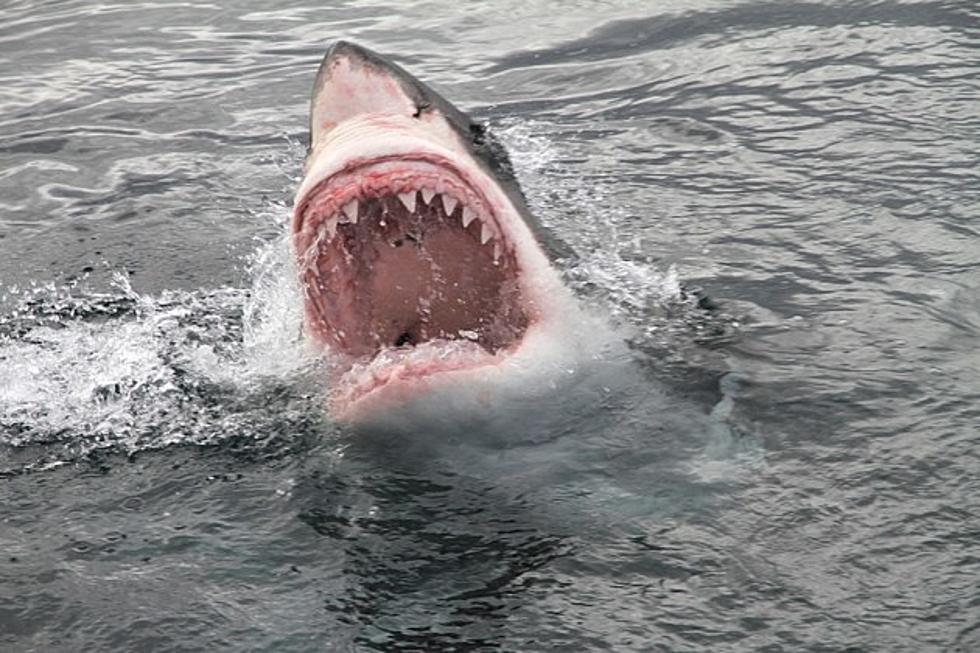
Odds Of A Shark Attack In Wyoming Drop To Zero
If you visit Wyoming today you could actually find shark teeth, if you know what to look for.
Imagine picking up one and feeling a sense of PANIC!
You're eyes dart around and you look for the shark that might be swimming through the prairie grass.
If you're so far inland then you should be okay, right?
So, why did you just find a shark's tooth?
RELAX!
There was a time when you could have been eaten by a shark while in Wyoming.
But that was a long time ago.
Today you're chances are ZERO!
The website Thrillist documents the odds of a shark attack in each state.
46. Wyoming - 0% chance
Ol' Faithful does not contain sharks...but that would be kind of cool. (Thrillist).
Now let's say that Wyoming had an Aquarium with all sorts of exotic sea life, including sharks. THEN the state would have a chance of shark attack. A very small chance, but not ZERO.
But hold on, let's back up a few million years.
There was a time when Wyoming would have topped the entire world in shark attacks.
Long before humans, Wyoming's landscape was vastly different.
Looking back we can see that the place we now call Wyoming has gone through massive changes over thousands of years.
Nothing stays the same.
Wyoming used to be at the bottom of the ocean.
At that time the Earth was so warm it did not have polar ice caps.
The center of what we now call North America was much lower and under an inland sea that went from the Gulf Of Mexico to the North Pole.
The video below will show you what Wyoming was like back when sharks swam it.
Sea life existed the likes of which the modern world has never seen.
99% of that life is now extinct.
That's because over time the land was lifted and the planet cooled.
Wyoming became swampy, like the Everglades of Florida. Wyoming had crocodiles. This region also had palm trees, marshes, and massive ferns.
Some species of life have never been known to humans and we will never know that they ever roamed the earth.
They died off as the climate changed, long before humans ever arrived on the scene.
Wyoming has also been much higher in elevation than it is now.
This area has also been a sandy desert, like Iraq.
Mountain chains have risen and fallen many times over.
Dinosaurs roamed this region.
All that is left of them now are the bones we find.
Then came the mammals like the saber tooth tiger, the giant sloth, the mammoth, and many other creatures that are now extinct.
Wyoming has been under a mile of ice more than once.
OUR EVER-CHANGING ECOSYSTEM.
Over time droughts come and go. But overall Wyoming and the West continue to get higher and dryer.
As regional weatherman Don Day pointed out, over the past 100 years these western states have been trending wetter.
About 100,000 million years ago the last ice age began.
About 20,000 years ago the last ice age came to an end.
It's not over.
The last ice age is still with us and is slowly fading over a long period.
This is why the planet still has glaciers and polar ice caps.
You might be wondering where it goes from here.
If we could fast forward another 10,000 years we would not recognize this state.
Who knows what manner of life will be living here?
The only constant is change.
As much as I love seeing the pronghorn of the west they have not always been here. I also know that they will not be here forever.
As humans, we have to get over the idea that the weather is supposed to be a certain way all the time.
Not every October will be a certain temperature. We will not get a specific amount of rain or snow every year.
There are long-term trends that change the plants' ecology and that change is natural and never-ending.
Any life that cannot adapt to it will perish.
Such is the natural order of things.
Wyoming Dinosaur Center
Gallery Credit: Glenn Woods
Exploring Wyoming's Alcova River Canyon
Gallery Credit: Glenn Woods
More From Wake Up Wyoming









